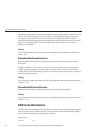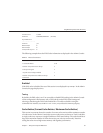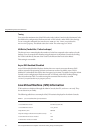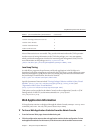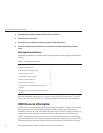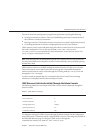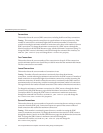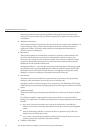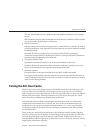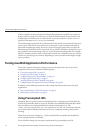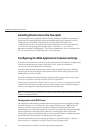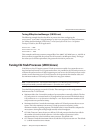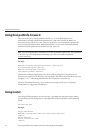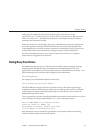
minimize creation of connections during the life of the application and minimize pool
resizing. Use a lower number if the pool load is expected to be small, to minimize resource
consumption.
■
Maximum connections
The maximum number of connections that a pool can have at any given time. Defaults to 32.
Use this setting to enforce a limit in the amount of connection resources that a pool or
application can have. This limit is also benecial to avoid application failures due to
excessive resource consumption.
■
Idle timeout
The maximum amount in seconds that a connection is ensured to remain unused in the
pool. After the idle timeout, connections are automatically closed. If necessary, new
connections are created up to the minimum number of connections to replace the closed
connection. Note that this setting does not control connection timeouts enforced at the
database server side. Defaults to 60 seconds.
Setting this attribute to –1 prevents the connections from being closed. This setting is good
for pools that expect continuous high demand. Otherwise, keep this timeout shorter than
the database server-side timeout (if such timeouts are congured on the specic vendor
database), to prevent accumulation of unusable connections in the pool.
■
Wait timeout
The amount of time in seconds that a request waits for a connection in the queue before
timing out. After this timeout, the user sees an error. Defaults to 60.
Setting this attribute to 0 causes a request for a connection to wait indenitely. This setting
could also improve performance by keeping the pool from having to account for connection
timers.
■
Validation method
The method used by the pool to determine the health of a connections in the pool. Defaults
to o.
If a validation method is used, the pool executes a sanity check on a connection before
leasing it to an application. The eectivity and performance impact depends on the method
selected:
■
meta-data is less expensive than table in terms of performance, but usually less
eective as most drivers cache the result and do not use the connection, providing false
results.
■
table is almost always eective, as it forces the driver to perform an SQL call to the
database, but it is also the most costly.
■
auto-commit can provide the best balance of eectiveness and performance cost, but a
number of drivers also cache the results of this method.
■
Validation Table Name
UsingMonitoringDatatoTuneYour Server
SunJavaSystemWebServer7.0Update1 PerformanceTuning,Sizing,and ScalingGuide •76



